Key takeaways:
- Artist relationships are built on trust, mutual respect, active listening, and vulnerability, which enhance creativity and collaboration.
- Establishing connections often leads to unexpected opportunities and mutual support, fostering personal and professional growth.
- Effective communication, including clear language and the use of technology, is essential for understanding and resonating with artists’ needs.
- Nurturing long-term partnerships involves celebrating milestones, genuine connections beyond business, and being present in artists’ journeys.
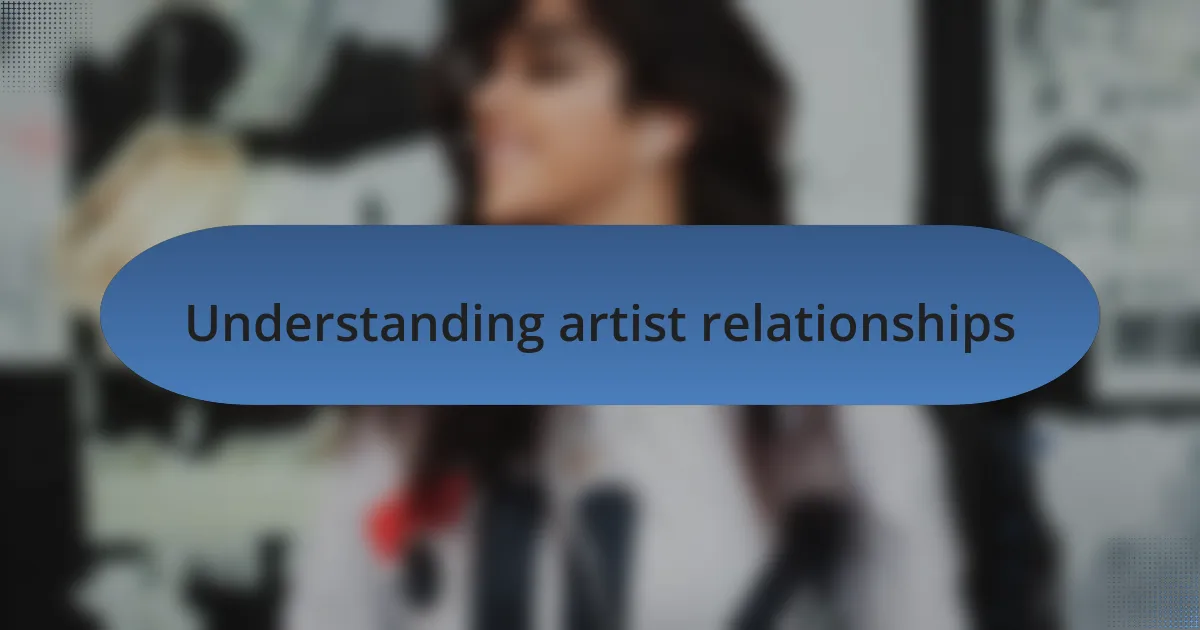
Understanding artist relationships
Understanding artist relationships goes beyond business; it’s about trust and mutual respect. I remember when I first started collaborating with a local artist. Our initial meetings were filled with excitement and some uncertainty, as we navigated our creative visions. Have you ever felt that spark when sharing ideas with someone passionate about their craft? It’s a crucial component of establishing a meaningful connection.
Building these relationships requires active listening and genuine engagement. I often find myself attending shows or listening to their mixes outside our meetings. This practice not only shows support but also fosters a deeper understanding of their artistic journey. What better way to connect than immersing yourself in their world?
Moreover, vulnerability plays a significant role in nurturing artist relationships. Opening up about fears and aspirations can be intimidating, yet it’s in those moments of honesty that true collaboration is born. I often share my own challenges in the industry, and it’s fascinating how sharing personal stories can bridge gaps and create a bond that enhances creativity. How do you approach vulnerability in your own partnerships?

Importance of artist connections
Artist connections are vital for both personal growth and professional success in the music industry. I vividly recall a collaboration with an emerging singer whose raw talent inspired me to think outside my usual box. That relationship wasn’t just about the music; it became a source of creative energy that pushed both of us to elevate our skills and explore new sounds together. When you form those bonds, the music transforms into something more profound.
Establishing these connections often leads to unexpected opportunities. I once attended a small showcase where I met a producer who later became instrumental in a project I never anticipated. Can you think of a moment when a chance encounter turned into a significant collaboration? These connections create a ripple effect, where each introduction can lead to another, expanding your network and solidifying your place in the industry.
Sharing mutual experiences creates a sense of camaraderie that can facilitate better collaboration. Last year, I collaborated with a songwriter who opened up about her struggles with self-doubt. That honest exchange created an atmosphere of trust, allowing us to delve deeper into our creative process. Moments like these remind me that at the heart of the industry, we are all in this together, feeding off one another’s energies and experiences to create something truly unique.
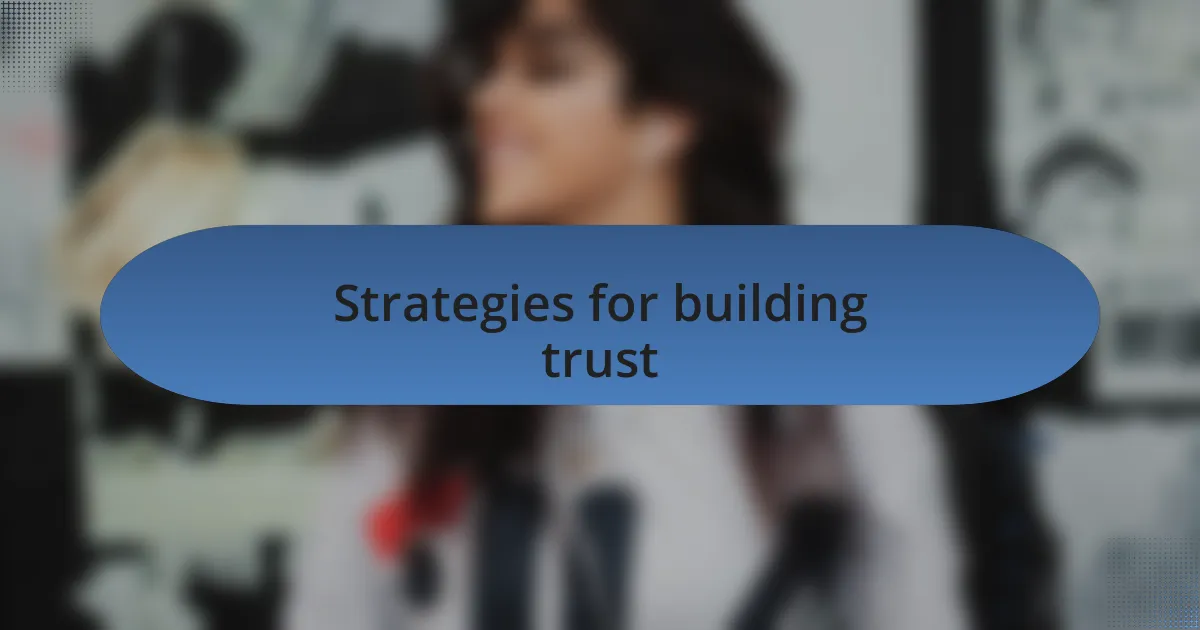
Strategies for building trust
Building trust with artists in the music industry often starts with being genuine and transparent. I remember when I first signed an indie band; I took the time to discuss their vision and aspirations openly. It was refreshing for them to see that I wasn’t just focusing on the bottom line but truly cared about their creative journey. Have you had a similar experience where honesty deepened a relationship?
Another effective strategy is to follow through on your commitments. Once, I promised an artist that I’d secure studio time within a week; I prioritized that and delivered ahead of schedule. The relief in their expression was palpable, and it solidified our relationship. It taught me that fulfilling promises not only shows reliability but also builds a foundation of mutual respect.
I find that consistent communication plays a crucial role in maintaining trust. Checking in regularly and showing interest in an artist’s day-to-day concerns fosters an environment where they feel valued. It’s like nurturing a plant; without regular care, it won’t flourish. When have you reached out to an artist, and how did that make them feel?
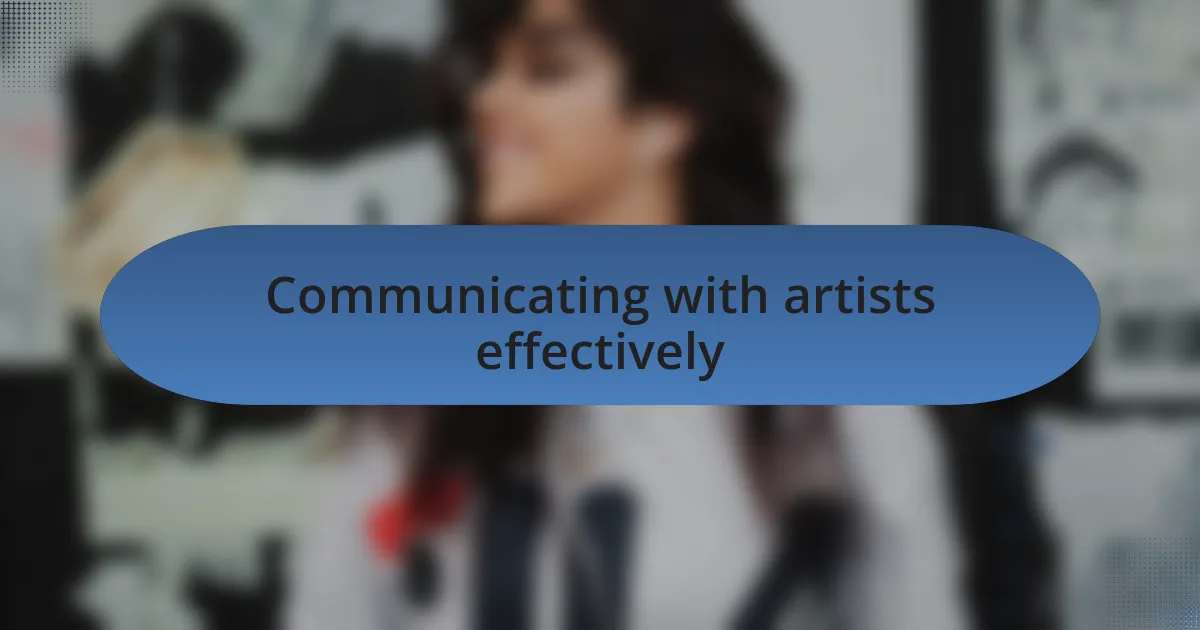
Communicating with artists effectively
Effective communication with artists is more than just exchanging words; it’s about creating a dialogue that resonates. I recall a time when I was discussing a new project with a singer-songwriter. Instead of jumping straight into business, I asked about their latest inspirations and struggles. This simple shift in focus allowed me to understand their creative process better and tailor my support to their needs, which they appreciated deeply. How often do we take the time to truly listen?
In my experience, using clear and positive language can make a significant difference in how your message is received. I once shared constructive feedback with an artist by framing it around their strengths, which made it easier for them to accept. Instead of feeling criticized, they felt empowered to improve their craft. Have you considered how your choice of words can shape someone’s motivation?
Additionally, leveraging technology can enhance communication with artists. I’ve used various platforms to provide quick updates and share resources seamlessly. One artist I worked with said they loved receiving bite-sized nuggets of information through texts rather than lengthy emails. It made them feel connected without the overwhelm. How do you prefer to receive information in today’s fast-paced world?
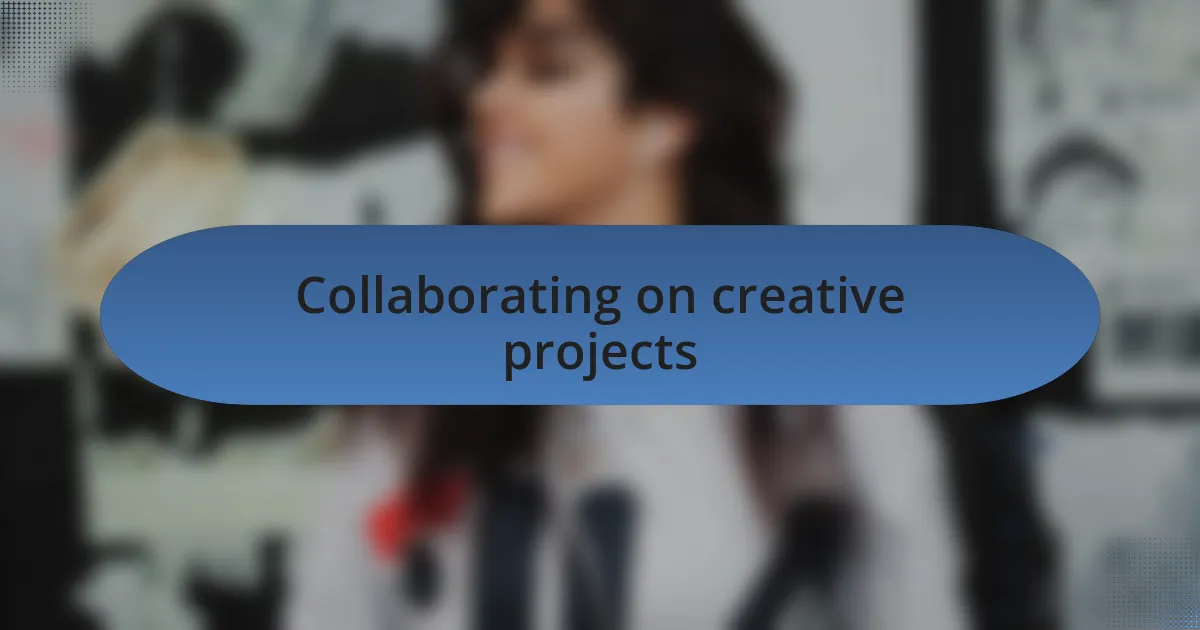
Collaborating on creative projects
Collaborating on creative projects often emerges from deep understanding and mutual respect. I remember a time when I joined forces with a local band to produce their first EP. Instead of dictating the project’s direction, I encouraged them to share their vision and themes. This collaboration transformed our initial meetings into a vibrant exchange of ideas, leading to a final product that truly reflected their artistic essence. How often do we allow the artist’s voice to lead the way?
I’ve found that brainstorming sessions can be a goldmine for creativity. Once, during a late-night session, we threw around random concepts and sounds. The energy in the room was infectious, sparking twists and turns we hadn’t anticipated. It was a reminder that when creativity flows freely without constraints, remarkable collaborations can emerge. Do you cherish those unexpected moments of inspiration that come from collective creativity?
Feedback plays a crucial role in the collaborative process, and I’ve learned to approach it with care. During a joint songwriting effort, I provided suggestions framed as collaborative opportunities rather than corrections. This mindset shifted the atmosphere from defensive to open, allowing the artist to feel safe exploring new directions. Have you ever experienced the difference between constructive feedback and criticism? It’s an essential distinction that can make or break a creative partnership.
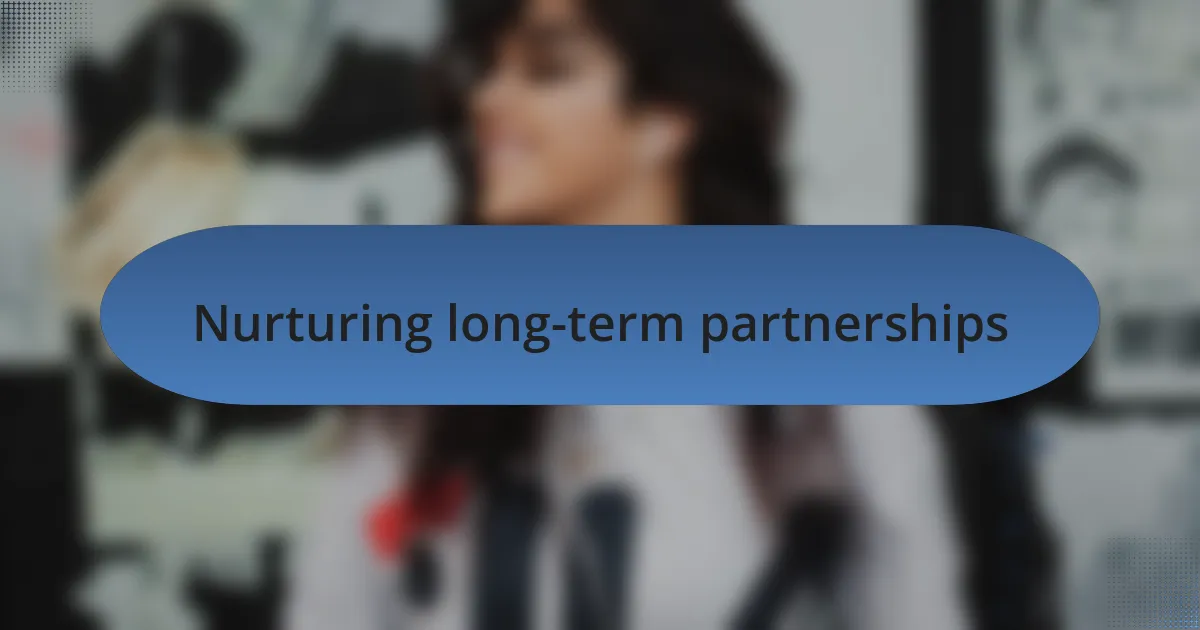
Nurturing long-term partnerships
Nurturing long-term partnerships requires developing trust and open communication. I recall an instance when an artist I worked with faced a personal setback, which made our interactions more fragile. Rather than pushing for deadlines, I chose to check in regularly, reinforcing that their well-being was a priority. How often do we take the time to genuinely connect beyond business transactions?
I’ve learned the importance of celebrating milestones together, no matter how small. After a successful release, I surprised a collaborator with a small gathering to toast their achievements. The joy in their eyes was a reminder that recognizing efforts strengthens bonds. Do we remember to honor both the journey and the destination when working with artists?
Beyond just projects, nurturing these relationships means being present in their artistic journeys. I often attend their shows, providing a familiar face in the crowd. This investment in their growth signals that I care about their success, not just during production phases. Have you ever considered how much your presence could mean to an artist?

Evaluating relationship success
Evaluating the success of a relationship with an artist goes beyond mere metrics; it involves a deeper understanding of mutual growth and satisfaction. Recently, I had a conversation with an artist about their creative direction. It was enlightening to hear their perspective on how our support helped shape their vision. How do we measure our impact if not through the realization of their artistic ambitions?
To me, the essence of successful relationships is recognizing when both parties feel fulfilled. I recall a time when an artist expressed uncertainty about their next project. By listening and providing feedback, I could help them clarify their thoughts. I often wonder: are we truly attuned to the needs of the artists we collaborate with, or are we focused solely on the outcomes?
Another critical aspect is open dialogue about feedback. I believe that constructive criticism can either build or break a relationship. One artist I worked with appreciated my candidness after a less-than-stellar review at a festival. This moment sparked an honest discussion that ultimately enhanced our collaboration. If we embrace these conversations, how much stronger could our partnerships become?